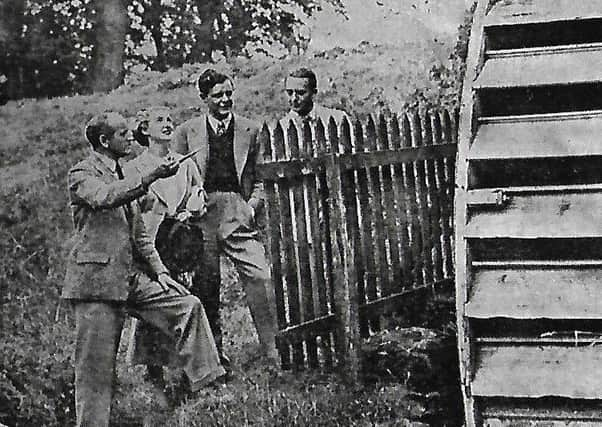Larne had taste of Hollywood long before Game of Thrones filming


Luck of the Irish was filmed at locations including Glynn, while another film, The Early Bird, moved north to Carnlough and Glenarm to film.
The common denominator in both was actor and film producer Richard Hayward, who had grown up in Larne and was a past pupil of the local Grammar School. Hayward was Ulster’s first major film star and also appeared in the film A Night to Remember, which told the story of the loss of the Titanic, as well as being a regular on BBC radio programmes in Northern Ireland. He was also an author, singer, folklorist and poet.
Advertisement
Advertisement
The Hayward family were originally from England but the children grew up in Larne and Hayward’s sister Gladys married Captain John Jenks, who was involved with the Ulster Volunteers during the Third Home Rule crisis and the Larne gun-running. Gladys was famously one of three UVF nurses (the other two were Lucy McNeill and Nora Rankin) who prepared food for the crew of the Clyde Valley when she arrived at Larne Harbour with her cargo of illicit guns and ammunition in April 1914.


Captain Jenks was one of Larne’s fallen, dying of wounds received during the Battle of the Somme just two years later, in July 1916. Richard Hayward would be an ambassador for Northern Ireland, which was one of the most disadvantaged regions of the UK, seeking to establish a viable film industry in the province in the 1930s.
He set up his own production company, the Irish Independent Production Company, in 1935 with two other young actors, Hugh McAlevey and Harold Goldblatt, and having worked as an actor in Belfast, Hayward had plenty of contacts, among them R. H. McCandless, who starred in Luck of the Irish. McCandless, who was involved with the Ulster Group Theatre, and seen as the grand old man of the theatre in Northern Ireland, would become more familiar with the local area in the years after Luck of the Irish.
Between 1937 and 1968 he produced the plays by the Ballycarry Players, among them Macook’s Corner, Professor Tim, The Jailbird, and Moody in Manitoba, the latter being performed 19 times by the Ballycarry group, and as far away as Donegal.
Advertisement
Advertisement
The ‘Auction in Killybuck’ was also among the plays, as was ‘The Drone’, one of the impressive full length Ulster plays from this period. McCandless produced Macooks Corner by George Shiels in the Victoria Hall in Larne in 1945, a report in the Larne Times in March that year noting that it was performed in aid of the local Sea Cadets.


His first flavour of the area may have been on the film set of Luck of the Irish, and he was one of a cast of more than 100 actors, cameramen and assorted film crew, according to author Paul Clements in his book on Hayward, ‘Romancing Ireland’, which was published in 2014.
Extra police had to be sent from Larne to regulate traffic in Glynn, then a village still boosting of several thatched cottages, and to control the crowds which gathered to see the filming and get a glimpse of the actors and actresses. The film company spent three weeks on location and during that time the Olderfleet Hotel at Larne Harbour became headquarters for the operation. Among the shots at Glynn were those filmed in the local post office as well as an old mill in the village, while Castle Upton at Templepatrick was also used as a set, along with other locations in Ireland and the Elstree studios in London.
Actress Kay Walsh was among the line-up in the film and she was a Londoner who started her career as a dancer in West End music halls, later starring in Alfred Hitchcock films and working with actors such as Alec Guinness. Hayward played the role of Sam Mulligan in the film while his friend, Kilwaughter man John Clifford appeared as an extra. Billed as Ulster’s first feature film, Luck of the Irish opened to rave reviews and attracted large audiences in New York when it opened there in January 1936. Hayward was to visit the United States and Canada to promote the film. A second film, The Early Bird, featured locations including Glenarm and Carnlough, and this saw Hayward singing local folk songs including The Muttonburn Stream. He starred in the film as Daniel Duff, and it was the second of his films that year, to be followed by Irish and Proud of it later that year and Devil’s Rock in 1937. The films underline there was once a vibrant film industry in Ulster long before the success of Game of Thrones brought much needed financial investment to the area. However, Hayward and his production company partners were ahead of their time in this regard; efforts to encourage the Northern Ireland government to invest in the industry in the 1930s proved fruitless.